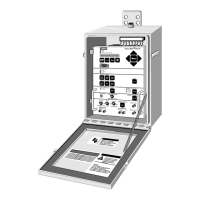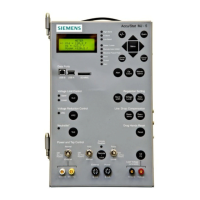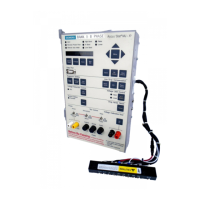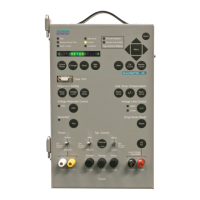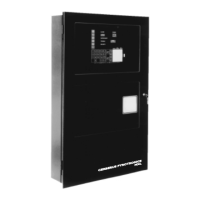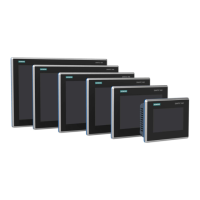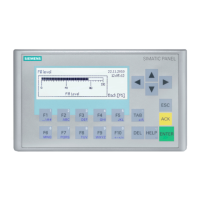5 Reading and Interpreting MJ-4A & MJ-4B Control Panel Data
44 Siemens Energy, Inc.
5.8 Alerts—the <Alert> Menu
Alerts represent exception conditions. A Alert condition
may be presently active, or it may have been active at
some earlier time. When a Alert occurs, the MJ-4
stores it
in the <ALERT> Menu, and illuminates the Alert LED Indi-
cator.
5.8.1 Viewing Alerts
If the Alert indicator is flashing, it denotes that a Alert has
occurred. Use either the Alert fast path key or the Menu
and Scroll keys to view the <Alert> Menu. Use the down
arrow key to scroll through the Alerts.
If the Alert name is flashing, acknowledgment is required.
5.8.2 Acknowledging an Alert
To acknowledge the Alert, press the Cancel/Reset key. If
the Alert condition is still active, the Alert name will stop
flashing but the Alert indicator will remain on (steady)
until the condition clears. If multiple Alerts have occurred,
you can step through them, one at a time using the Alert
key or the ¿ and À keys. The Alert indicator will continue
to flash until all Alerts have been acknowledged.
The conditions listed in Table 5.8 activate ALERT status.
The conditions are listed in priority sequence from highest
priority at the top to lowest priority at the bottom.
Notes for Table 5.8:
1. Alert status is in effect if any Message condition is active. If the Alert status is the result of more than one condition, the Message
Indicator will flash until all Alerts requiring acknowledgment have been acknowledged. Whenever the Alert Indicator is flashing, it is an
indication that the contents of the <ALERT> Menu should be reviewed.
2. Continuous - Condition lasts indefinitely. (May persist after Alert is acknowledged.)
3. Momentary - Condition lasts briefly.
4. ACK required - The MJ-4
keeps the Alert active until you acknowledge it.
5. Auto-clear - The MJ-4
automatically clears the Alert when the condition ceases.
6. The Tap Track Error alert can be disabled, if desired. See Table 4.2 on page 17.
Table 5.8 Alert Data Items
Alert Name Description Duration Ack. Type
Low Current Low Current reading-- Magnitude below 1% full scale. Continuous Auto-clear
Auto Inhibit Automatic mode inhibited from either terminal block or communication
link
Continuous Auto-clear
Pseudo Manual A remote tap raise/lower operation has been requested
(via Communications Module)
Continuous Auto-clear
Tap Track Er ror
6
The dead reckoning procedure has detected an inconsistency between its
assumed tap changer position and the position signaled by the PDS.
Momentary ACK required
Neutral Signal
Error
The MJ-4
senses that the Neutral signal remains active though the tap
change input indicates that the tap has moved from Neutral.
Momentary ACK required
Tap Position ???? The MJ-4
does not know the present tap position (based on the dead reck-
oning algorithm).
Continuous Auto-clear
Low PT Threshold The MJ-4
detects a Vld voltage below the PT Threshold setting. Continuous Auto-clear
Over Current The current exceeds the threshold determined by:
I Load Max(%) x I FullLoad
Continuous ACK required
NV RAM Reset The non-volatile (battery-backed) Static RAM appears to have lost some or
all of its data.
Momentary ACK required
Low Battery The back-up battery is below the minimum threshold and should be
replaced.
Continuous Auto-clear
High Voltage Maximum PT voltage exceeded (145 Volts for U2 and/or P2) Continuous ACK required
Not in auto Auto/Manual switch is in Manual Continuous Auto-clear
R Limit Reached Raise Limit Reached. Tap position has reached or exceeded the value
specified in “R Limit” item
Continuous Auto-clear
L Limit Reached Lower Limit Reached. Tap position has reached or exceeded the value
specified in “L Limit” item
Continuous Auto-clear
Self Test Fault The MJ-4
self test found an error condition Continuous ACK required

